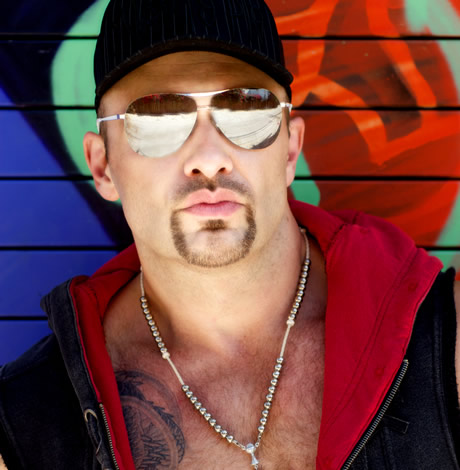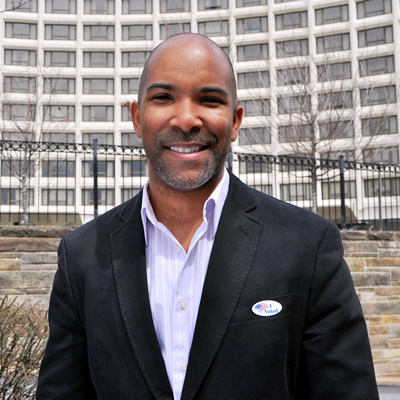Miscellaneous
Gay man to lead national disability group
Perriello sees parallels between LGBT, disability advocacy
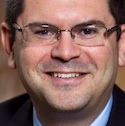
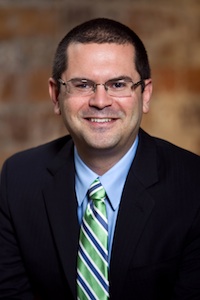
Mark Perriello is president and CEO of the American Association of People with Disabilities. (Photo courtesy of Perriello)
For many, coming out as LGBT after growing up Catholic would be challenging enough. Yet for former Obama administration aide Mark Perriello, 36, who grew up in Chelmsford, Mass., outside Boston, that was only one of the challenges that he had to face. Visually impaired since he was a child, he had to come out not only as gay but as a person with a disability.
Today, Perriello, known in the LGBT community as a political strategist, is the new president and CEO of the American Association of People with Disabilities, the country’s largest cross-disability membership group. Perriello’s well-regarded grassroots development and political strategizing in the LGBT community played a key role in his appointment to this position, said AAPD board members, who believe these skills will empower the bi-partisan, disability advocacy organization. He took the helm of AAPD on June 6.
In an interview the with Blade in his K Street office in Washington, D.C., Perriello discussed the parallels between the LGBT and disability civil rights movements and his goals for AAPD. (This month, in commemoration of the passage of the Americans with Disabilities Act on July 26, 1990, is Disability Pride Month.)
In his boyhood, he was taught that being gay was a sin, Perriello said. In his youth, he became involved with the ex-gay movement.
“I thought that if I just prayed hard enough, that I would be able to change,” Perriello said.
Perriello didn’t come out until he was a student at Rhodes College in Memphis, Tenn., where he graduated with a bachelor’s degree in religious studies. “I had a lot of positive role models,” he said, “they helped me to be comfortable with the fact that I’m gay.”
Yet, as difficult as coming to terms with his sexual orientation was for him, Perriello also had to become comfortable within himself about having and disclosing his disability. His vision impairment is a result of an infection called toxoplasmosis. He is blind in his right eye and, with corrective lenses, has 20/20 vision in his left eye.
“In many ways it was more challenging to come out as a person with a disability than it was to come out as LGBT,” Perriello said, “There is a lot of stigma that unfortunately in our society goes along with disability.”
From grade school through college, he was teased about his vision impairment, Perriello said. Other students would have him close his left (sighted) eye to find out what they could do in front of him that he couldn’t see, he said. “Some of it would be more subtle,” Perriello said, “from preconceived notions of whether I could perform in an athletic environment … all the way to people thinking it was a great trick at fraternity parties, which was less subtle.”
But the bullying, though painful, made him stronger, Perriello said, “because you know when the teasing needs to stop.”
He’s always identified as a person with a disability and viewed disability as a civil rights issue, Perriello said. But, “I didn’t become engaged in the disability community until I began working at the White House,” he added.
Before joining the Obama administration, Perriello’s civil rights advocacy took place in the LGBT community. He served in leadership roles — fundraising, organizing and developing communication strategies at the Human Rights Campaign and the Gay & Lesbian Victory Fund and Leadership Institute. Perriello also was vice president of BNA Communications and a senior associate at Scott + Yandura.
In the Obama administration, Perriello served as the White House liaison at the U.S. Department of the Interior and the White House Priority Placement director. In this position, he became actively involved with the disability community, Perriello said.
“Working to help qualified candidates from under-represented groups find employment in the Obama administration, I witnessed the challenges that people with disabilities often face in the hiring process,” he said.
Disabled people, looking for work, sometimes encounter accessibility issues such as lack of wheelchair access, Perriello said. “Some employers fear that there’s too much cost in providing assistive technology or other types of accommodation,” he said. “Other employers feel that people with disabilities lack the intellectual capacity to work,” Perriello said. “This is not the case.”
As Priority Placement Office head, Perriello worked with AAPD’s board. “I came to believe that this civil rights fight is one that has a lot of work ahead,” he said.
He looks forward to helping AAPD work to overcome the stigma and injustice encountered by many with disabilities, Perriello said.
“It’s going to take a long time, but you know it and I know it. Americans with disabilities are just like everyone else,” he said. “They show up and do good work.”
LGBT culture is “very image conscious” and there is some stigma against people with disabilities that goes along with that, Perriello said. “But it’s the same stigma whether you’re gay or straight,” he said. “The challenges are the same. Whether it’s lacking access to a bar or some other social environment.”
We’re hit daily with stereotypical images of people with disabilities through social media, TV and movies, Perriello said. “This is true in gay and straight culture. At AAPD we’re hoping to change that.”
As an example of this effort, Perriello cited AAPD’s 2011 Gala, where the group bestowed its Image Award on the cast and creative team of “Glee,” for the show’s diversity, including its disability storylines, and characters and actors with disabilities.
There are parallels between the disability and the LGBT civil rights movements, Perriello said. Just as there are people in the LGBT community who aren’t active politically, he said, “there are a lot of Americans with disabilities out there that aren’t engaged in the [disability] civil rights fight.”
Perriello, working with the AAPD team, is determined to strive to make the disability community more engaged on the political level. There are strategies and tactics that he used as an LGBT political strategist, that can be used to engage the disability community, Perriello said. “Anything from making it easier for folks to understand the positions of their elected officials, to seeing how we can work to influence elections and show … that we’re a powerful constituency.”
Helping to connect folks with the best employers and the best companies to work for is something that the LGBT community does well, Perriello said. “It’s something that we [in the disability community] could do as well if not better.”
To be engaged, you have to have a “sense of self-worth,” Perriello said. You have to show the next generation, “that you can do whatever you want. That is a parallel to the LGBT community. It happens because folks are out there, they’re leading businesses—they’re elected officials.”
The challenges Perriello faces are formidable. Seventy percent of Americans with disabilities are unemployed or under employed, according to the U.S. Census Bureau.
Twenty-five percent of people with disabilities surveyed by a 2010 Harris Poll were unfamiliar with the ADA, a civil rights law prohibiting disability-based discrimination in employment and public accommodations.
Perriello is well-suited to meet these challenges, said Cheryl Sensenbrenner, a former AAPD board chair, in a telephone interview. “His grassroots and organizing skills honed in the LGBT community are transferable,” she said, “He’s well-suited to take AAPD to the next level.”
Winnie Stachelberg, senior vice president of external affairs of the Center for American Progress, describes herself as a “huge fan” of AAPD and of Perriello.
“I met Mark over a decade ago when I hired him to work for HRC,” said Stachelberg. “Mark intuits how to help diverse people work well together to focus on a common goal. He won’t be the loudest voice, but he’ll be the one driving change.”
Miscellaneous
What it means to be an active ally to your LGBTQ+ co-workers TEST
Five easy tips to help you avoid common risks
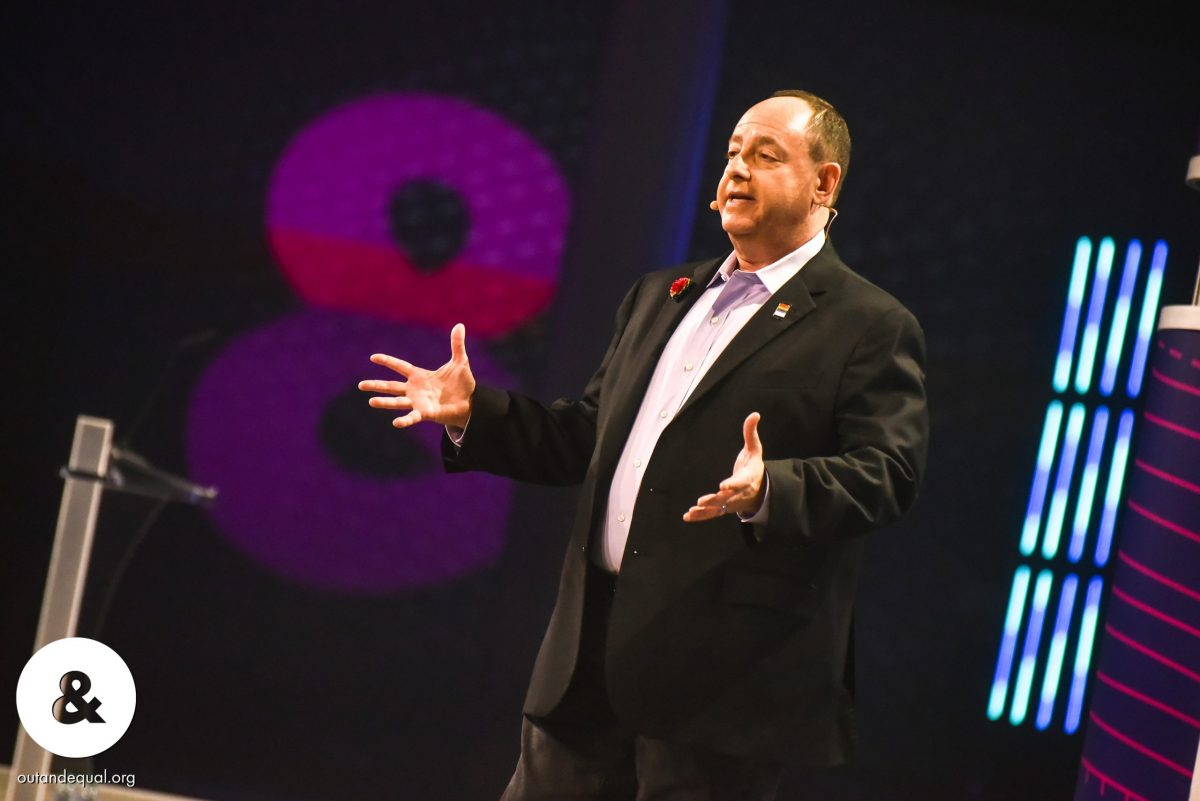
Your home is more than just a place to eat and sleep; it’s your safe haven. As much as you might cherish your home, you should probably also recognize the potential hazards within its familiar walls. Accidents can happen in an instant, yet with a little foresight and some simple adjustments, you can transform your house into a safer haven.
Accidents can happen anywhere, and with a few simple tweaks, you can lower risks in your space. Below you’ll find five tips for each room in your home to help prevent injuries, falls, and other mishaps. In short, home safety.
This article was inspired by a shower in a rental we managed that began leaking through the kitchen ceiling below. If only the landlord had installed grab bars, right!? Below, we’ll guide you through the steps to fortify your bathroom, making it a place of relaxation without the fear of slips and falls. Then, we’ll venture into the room where the magic happens, where proper planning can ensure great nights and peaceful mornings. We’ll show you how to prevent accidents while you experiment becoming the next Gordon Ramsey. And we’ll include a few surprising solutions for those other rooms that hold their own unique hazards, offering solutions to safeguard against unexpected mishaps.
Bathroom Safety
Install Grab Bars: Adding grab bars near the shower and toilet can provide essential support for family members of all ages. Not only can they help with getting in and out, but they can help provide stability when washing. Make sure they are securely anchored to the wall.
Non-Slip Mats: Place non-slip mats inside the shower and bathtub to prevent slips. They’re a small investment that can save you from falls and head injuries.
Adjust Water Temperature: Ensure your hot water is set to a safe temperature to avoid scalding. The hot water heater should be set to around 120°F (49°C)l, the middle setting on many water heater settings.
Medicine Cabinet Locks: If you have young children, use childproof locks on your medicine cabinet to keep harmful substances out of reach.
Proper Lighting: Ensure there’s adequate lighting in the bathroom to avoid trips and falls during nighttime visits. Nightlights can be a simple and effective solution.
Bedroom Safety
Clear Pathways: Keep pathways in the bedroom clutter free to prevent tripping. Ensure there’s enough space to move around comfortably, particularly getting around the bed. Be aware where all furniture is when walking around to avoid stubbed toes, particularly at night.
Secure Rugs: If you have throw rugs, use rug grippers or double-sided tape to keep them from slipping. Loose rugs are a common trip hazard.
Bed Rails: For anyone at risk of falling out of bed, consider installing bed rails to provide extra support and prevent falls.
Nightstands with Drawers: Opt for nightstands with drawers to keep essential items. This reduces the need to get out of bed at night, minimizing the risk of falls, as you race to grab what you need and not lose a moment’s rest.
Fire Safety: Install battery-operated smoke detectors in the bedrooms if there are none. Make sure to install them 36 inches away from an air vent or the edge of a ceiling fan. Also six inches away from the joint between the wall and ceiling. And test smoke detectors regularly.
Kitchen Safety
Non-Slip Flooring: Choose slip-resistant rugs in the kitchen, especially in areas where spills are common. Mats near the sink and stove can also help and you can often buy them fairly cheaply at Costco.
Childproof Cabinets: If you have little ones, use childproof latches on cabinets and drawers to prevent them from accessing potentially hazardous items.
Anti-tip brackets: Install an anti-tip bracket behind the range. These are often used when children are in the home. Although they are less likely to open the oven door and use it as a step stool to get to the stove-top, adults can also benefit from installing these.
Adequate Lighting: Proper lighting is crucial in the kitchen to avoid accidents. Under-cabinet lighting can illuminate work areas effectively.
Secure Heavy Items: Ensure heavy pots and pans are stored at waist level to prevent straining or dropping them from high shelves.
Sharp Object Storage: Keep knives and other sharp objects in a secure drawer or block. And handle all sharp items with extreme care, even when washing and drying. These steps reduce the risk of accidental cuts.
Other Safety Tips
Furniture Anchors: Secure heavy furniture, like bookshelves and dressers, to the wall to prevent tip-overs, especially if you have young children.
Adequate Outlets: Check for damaged outlets and replace them promptly. Avoid overloading circuits with too many devices. Install placeholder plugs in outlets to prevent young curious fingers (or tongues?) from going inside an electrical outlet.
Stair Gates: If your home has stairs, install safety gates at the top and bottom to prevent falls, especially if you have toddlers or pets to keep them off of the stairs when you cannot monitor them.
Emergency Escape Plan: Develop and practice an emergency escape plan with your family, including a designated meeting place outside.
Carbon Monoxide Detector: If your home burns any fossil fuels for heating or appliances, install carbon monoxide detectors in common areas of your home to detect this odorless gas. The D.C. building codes require this if you use a fireplace or if you have an attached garage. In essence, if there is any potential source of carbon monoxide in the home, be sure to install these detectors.
Remember, a safer home not only prevents accidents but also provides peace of mind for you and your family. Implement these simple tips to create a secure environment in every room of your house.
With these practical tips and a few adjustments, you can significantly reduce the risk of injuries and falls in your home. Enjoy peace of mind in your now much safer haven.
Scott Bloom is owner and senior property manager of Columbia Property Management.
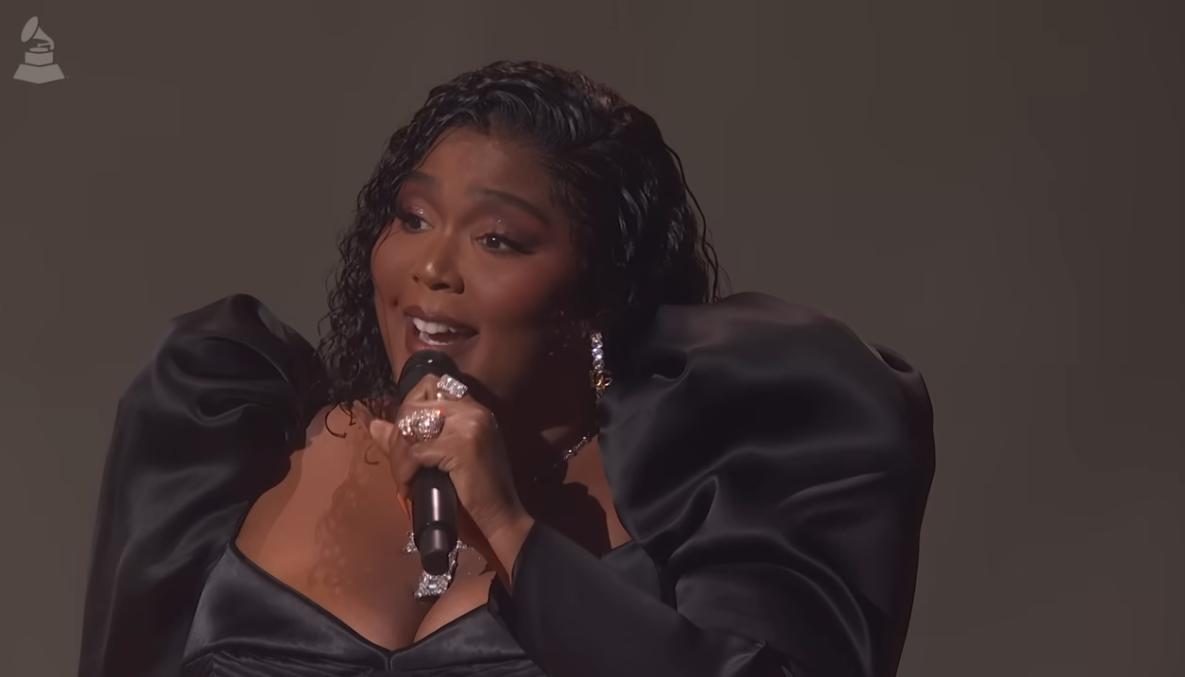
When Lizzo sings “If I’m shinin,’ everybody gonna shine,” in her hit song, “Juice,” she means it. Proof of that came this week on Instagram when the LGBTQ ally announced the first winner of her annual Juneteenth Giveback Campaign is the Marsha P. Johnson Institute, a national nonprofit based in Richmond, Calif., dedicated to the protection and defense of Black transgender people.
And she did so in song: “On the first day of Juneteenth, Lizzo gave to me,” she sang in her video, posted Tuesday, as she revealed her $50,000 gift to MPJI.
“That’s right, we know who Marsha P. Johnson is. We know what Marsha P. Johnson has done for the LGBTQ, emphasis on that ‘T,’ Q community,” said Lizzo to her 13.5 million followers. “Thank you so much to the people at the Marsha P. Johnson Institute. You deserve this, and I hope this helps you so much as you help protect our Black trans family.”
“What the Marsha P. Johnson Institute does is protects and defends the rights of Black transgender people. They do this by organizing community, advocating for the people, and creating an intentional healing community, developing transformative leadership and promoting collective power,” she said.
“We are overjoyed for the shoutout from Lizzo today, the generosity of her sharing her platform and the recognition of MPJI and its work,” said Elle Moxley, MPJI’s executive director. “The resources from this campaign will ensure the protection and defense of Black transgender people continue at a time where it is so vitally needed. We are so grateful for the support of Lizzo and her fans.”
As one of Time Magazine’s Persons of the Year for 2019 and a 2023 Grammy winner, Lizzo is more than a pop star but an inspiration to millions of fans for her body-positive attitude, her self-confidence on stage and in her videos, her empowering music and her activism. She’s also the founder of her own clothing line, Yitty. In 2021, she made headlines when she publicly corrected a paparazzo for using “she/her” pronouns and misgendering Demi Levato.
As part of her campaign, now in its 4th year, Lizzo recognizes Black-led grassroots organizations and businesses and encourages her fans to join her in supporting each of the five organizations she highlights this week. Fans who take action by donating are entered into a drawing for an all-expenses paid trip to see her perform at Fuji Rock in Japan later this year.
This week’s other nonprofits receiving gifts are: Black Girls Smile, Sphinx Music, the University of Houston and Save Our Sisters United.
Find out more about Lizzo’s 4th annual Juneteenth Giveback Campaign by clicking here.
Celebrity News
Anne Heche dies after removal from life support
Actress dated Ellen DeGeneres in late 1990s

Actress Anne Heche died after she was removed from life support on Sunday, nearly two weeks after her Mini-Cooper crashed through a two-story house in Los Angeles’ Mar Vista neighborhood. Investigators with the Los Angeles Police Department believe she was intoxicated at the time.
She sustained a severe anoxic brain injury along with severe burns and was being treated at the Grossman Burn Center at West Hills Hospital, near Chatsworth in the San Fernando Valley.
The 53-year-old actress who was a star of films like “Donnie Brasco,” the political satire “Wag the Dog” and the 1998 remake of “Psycho,” had been declared legally dead under California law on Friday, however, her family kept her alive long enough to be an organ donor.
In a statement Friday, the LAPD announced that: “As of today, there will be no further investigative efforts made in this case. Any information or records that have been requested prior to this turn of events will still be collected as they arrive as a matter of formalities and included in the overall case. When a person suspected of a crime expires, we do not present for filing consideration.” LAPD detectives had previously made public that investigators into the crash found narcotics in a blood sample taken from Heche.
The actress’s family released a statement on Friday:
“Today we lost a bright light, a kind and most joyful soul, a loving mother, and a loyal friend. Anne will be deeply missed but she lives on through her beautiful sons, her iconic body of work, and her passionate advocacy. Her bravery for always standing in her truth, spreading her message of love and acceptance, will continue to have a lasting impact,” the statement added.
Heche was married to camera operator Coleman Laffoon from 2001 to 2009. The two had a son, Homer, together. She had another son, named Atlas, during a relationship with actor James Tupper, her co-star on the TV series “Men In Trees.”
Laffoon left a moving tribute on an Instagram reel in which he also gave an update on how their 20-year-old son Homer Laffoon is coping with the loss of his mother.
“I loved her and I miss her, and I’m always going to,” he said adding: “Homer is okay. He’s grieving, of course, and it’s rough. It’s really rough, as probably anybody can imagine. But he’s surrounded by family and he’s strong, and he’s gonna be okay.”
“Rest In Peace, Mom, I love you, Homer,” the actor’s 20-year-old son, Homer, said in a statement after Heche was declared legally dead on Friday.“ My brother Atlas and I lost our Mom,” read the statement. “After six days of almost unbelievable emotional swings, I am left with a deep, wordless sadness. Hopefully, my mom is free from pain and beginning to explore what I like to imagine as her eternal freedom. Over those six days, thousands of friends, family, and fans made their hearts known to me. I am grateful for their love, as I am for the support of my Dad, Coley, and my stepmom Alexi who continue to be my rock during this time. Rest In Peace Mom, I love you, Homer.”
Tupper, a Canadian actor who starred alongside Heche in “Men in Trees,” had a 13-year-old son, Atlas, with her. “Love you forever,” Tupper, 57, wrote on his Instagram post’s caption with a broken heart emoji, which shared an image of the actress from Men in Trees.
Between 1997 and 2000, Heche was also in a relationship with talk show host Ellen DeGeneres.
“This is a sad day,” DeGeneres posted on Twitter. “I’m sending Anne’s children, family and friends all of my love.” The year after her break-up with the comedian, in September 2001, Heche recounted in her memoir “Call Me Crazy,” about her lifelong struggles with mental health and a childhood of abuse.
KTLA’s entertainment reporter Sam Rubin noted that over the past two decades, Heche’s career pivoted several times. In 2017, she hosted a weekly radio show on SiriusXM with Jason Ellis called “Love and Heche.”
In 2020, Heche made her way into the podcast world. She launched “Better Together” which she cohosted alongside Heather Duffy Boylston. The show was described as a way to celebrate friendship.
She also worked in smaller films, on Broadway, and on TV shows. She recently had recurring roles on the network series “Chicago P.D.,” and “All Rise” and was a contestant on “Dancing with the Stars.”
People magazine reported that several of Heche’s acting projects are expected to be released posthumously.
These include “Girl in Room 13,” expected to be released on Lifetime in September, “What Remains,” scheduled to be released in 2023, and HBO Max TV series “The Idol,” created by Abel Tesfaye (The Weeknd) and Euphoria creator Sam Levinson.
In her Instagram post from earlier this year Heche stands between her sons Atlas, 13 and Homer, 20.
From KTLA:
-

 State Department2 days ago
State Department2 days agoState Department releases annual human rights report
-

 Maryland4 days ago
Maryland4 days agoJoe Vogel campaign holds ‘Big Gay Canvass Kickoff’
-

 Politics3 days ago
Politics3 days agoSmithsonian staff concerned about future of LGBTQ programming amid GOP scrutiny
-

 The White House1 day ago
The White House1 day agoWhite House debuts action plan targeting pollutants in drinking water


